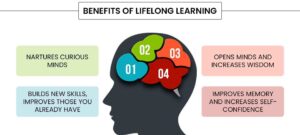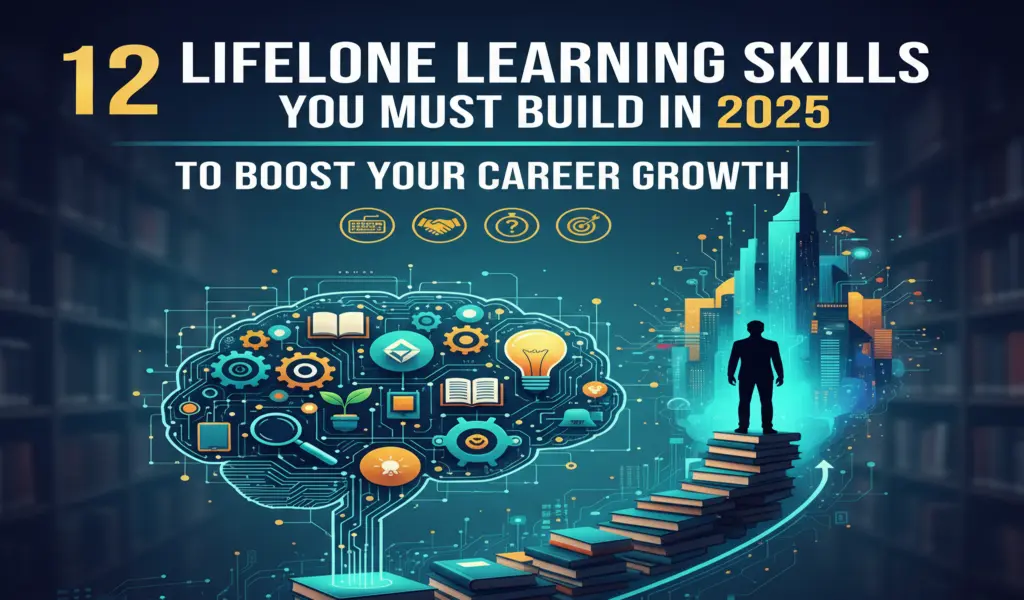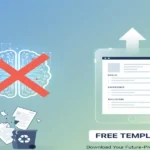Lifelong learning means you choose to keep picking up useful knowledge, even after school or between jobs. It’s ongoing education that boosts your career and keeps you curious about life.
It also keeps your brain active and your skills sharp. Today, skills go out of date fast. Jobs shift. New tools pop up every month. To stay employable, you need a basic plan for how to keep learning.
In this article, you will learn what lifelong learning skills are. You will see the main ones to build, plus ways to improve them with real examples.
You will also find out how to use these skills on the job and how to show them when you apply for work.
What are lifelong learning skills?
These skills help you stay independent in your learning. They let you stay curious, set goals, find resources, and turn what you learn into real steps. People with these skills spot chances fast and grab them. This leads to quicker changes and better jobs with more pay.
Lifelong learning skills include critical thinking, effective communication, collaboration, and empathy. They also cover time and technology management. These skills make it easier to learn new ideas, pick up new tools, and handle work challenges.
Recognizing and incorporating lifelong learning into your career and keeping your mind active are crucial. The information in the source is valid and reliable.
The Importance of Lifelong Learning in 2025

The workplace changes fast. New technologies, artificial intelligence, and automation shift job tasks. Adaptability makes role changes simpler and cuts down on worry about shifts.
Skills become outdated quickly, and the only way to stay ahead is to keep learning.
Employers value people who commit to learning. Self-drive, curiosity, and bounce-back power open doors to better chances.
Learning new things helps your brain overall, like better focus, memory, and confidence.
It builds a sense of connection. Classes, clubs, and groups of peers create networks with people who share your interests.
1. Adaptability
What it is: The ability to adjust to new tools, methods, and situations.
Why it matters: Industries change. People who adapt pick up new things faster and deal with shifts without stress.
How to build it:
Try new workflows each quarter. Change one tool or step, then check the results.
Volunteer for projects outside your usual role. Ask for feedback after changes. Note what worked and what did not.
Quick win: When a new tool comes out, make a 7-day plan to test one feature each day.
2. Technology literacy
What it is: Comfort with digital tools, basic data skills, and security habits.
Why it matters: Tech powers most work today. You do not need to code like an expert, but you do need to use tools well.
How to build it:
Learn one main tool each quarter. Examples: spreadsheets, project boards, cloud storage, and AI chats.
Take a beginner course on data basics: sorting, filtering, and simple charts.
Practice safe steps: strong passwords, two-factor setup, and spotting phishing.
3. Critical thinking
What it is: Checking information, finding hidden assumptions, and making solid choices.
Why it matters: In a world full of noise, clear thinking saves time and cuts risks.
How to build it:
Use a basic framework: Problem, Causes, Options, Tradeoffs, Decision.
Check at least two sources before you act.
Practice “steelman” thinking: restate the best version of an idea you disagree with.
4. Problem-solving
What it is: Turning messy issues into clear steps and fixes.
Why it matters: This skill drives promotions. You solve problems without extra fuss.
How to build it:
Break problems into parts: inputs, limits, outputs.
Test small trials. Learn from them, then grow what works.
Keep a “solutions log” with the issue, fix, and result.
Template:
- Issue:
- Root cause:
- Options (3):
- Chosen approach:
- Result:
- Next step:
5. Effective communication
What it is: Clear speaking and writing. Good listening. Messages that fit the person.
Why it matters: Most learning happens with others. Clear talk speeds things up.
How to build it:
Use short sentences. One idea per sentence.
Start messages with the key point, then add details.
Ask one question at a time. Repeat back what you heard to check.
6. Time management
What it is: Planning, picking priorities, and guarding your focus.
Why it matters: Learning falls apart without time set aside.
How to build it:
Block two 30-minute study times each week. Treat them like meetings.
Use a 3×3 rule: three priorities per week; three tasks per day.
Group-like tasks. Turn off notifications during study time.
Tool stack: Calendar, a simple to-do list, and a notes app. Keep it simple.
7. Curiosity
What it is: The urge to ask questions and check out new ideas.
Why it matters: Curiosity fuels steady learning. It makes the process enjoyable.
How to build it:
Keep a “question list.” Add three questions each week.
Follow one question to a short article or video. Sum it up in five lines.
Share one idea with a friend or coworker.
8. Self-motivation
What it is: Starting and sticking to goals without constant nudges.
Why it matters: Lifelong learning is a long-term. Inner drive keeps you on track.
How to build it:
Set small, clear goals. Link them to something that matters to you.
Track your streaks. Even 10 minutes counts.
Celebrate wins. Do a weekly check, then pick a small reward.
9. Bounce-back power
What it is: Getting back up after mistakes or slow steps.
Why it matters: Learning has bumps. This power keeps you moving.
How to build it:
See setbacks as normal. Log what you tried and what you gained.
Use “yet” words. “I do not get this yet.”
Ask for help sooner. Fast feedback saves time.
10. Goal-setting
What it is: Picking targets that are specific, doable, and set for a date.
Why it matters: Goals shape your study plan and track your steps forward.
How to build it:
Use this format: I will [skill] by 2025 as shown by [output].
Example: I will learn spreadsheet formulas by May 30, as shown by a working budget sheet.
Check goals each month. Tweak the size, not the level.
11. Creativity
What it is: Coming up with fresh ideas and links between things.
Why it matters: It helps you find new ways to learn and fix issues.
How to build it:
Try limits: learn a tool with only free guides in one week.
Mix things: blend two skills, like basic coding and design.
Keep an idea bank. Look at it weekly.
12. Teamwork and networking
What it is: Working with others and building your contacts.
Why it matters: People speed up learning. Mentors and peers create openings.
How to build it:
Join a learning group or cohort. Share updates in weekly talks.
Shadow someone in another role for a day.
Go to one meetup or webinar each month.
How to improve lifelong learning skills

Use this four-step process from the source content.
Step 1: Identify where you can improve
- Do a quick self-check. Rate each skill from 1 to 5.
- Ask a coworker or mentor for input on two spots.
- Pick one strong area to use and one weak spot to fix.
Step 2: Set clear learning goals
- Make them specific and tied to a date.
- Example: Boost technology literacy by finishing a beginner data course in 14 days and making one dashboard.
Step 3: Plan for what you can handle
- Stay real about time. Skip huge goals in busy weeks.
- Work in short bits. Two 30-minute blocks beat one 3-hour slot you miss.
Step 4: Celebrate your accomplishments
- Check progress each month. Note skills, results, and good moments.
- Share with your boss or learning group.
- Reward yourself. Small wins build up.
Using lifelong learning skills at work
Here are practical ways to apply what you learn:
Chase certifications beyond your current job. Example: A designer gets a web analytics certificate.
Volunteer for projects across teams. Learn flows and tools by jumping in.
Shadow someone in another role. Watch, ask questions, and try a small task.
Start a learning group at work. Meet every two weeks. Share one resource and one recent win.
Example learning plans
Plan A: Technology literacy starter (4 weeks)
Goal: Use spreadsheets to check basic data.
Week 1: Interface, formatting, sorting, filtering.
Week 2: Formulas (SUM, AVERAGE, COUNTIF), simple charts.
Week 3: Pivot tables basics. Build a report.
Week 4: Mini-project. Create a monthly budget or simple KPI dashboard.
Output: One dashboard. 500-word note on what you learned.
Plan B: Critical thinking and problem-solving (3 weeks)
Goal: Use a basic decision framework on the job.
Week 1: Learn the Problem-Causes-Options-Decision template. Apply it to one small issue.
Week 2: Check two sources for a work question. Write a 1-page summary.
Week 3: Run a small test. Measure and report the results.
Output: Solutions log with three entries.
Plan C: Time management for steady learning (2 weeks)
Goal: Build a habit that lasts.
Week 1: Block two 30-minute sessions. Use a 3×3 weekly plan.
Week 2: Turn off alerts while studying. Group admin tasks. Track a 7-day streak.
Output: Calendar screenshot, streak count, and one-page note.
FAQs about lifelong learning skills
1. Is lifelong learning the same as going back to school?
No. Steady education can mean courses, but it also covers books, videos, projects, mentors, and hands-on practice. You can learn without a full degree.
2. How much time should I spend each week?
Start small. One hour per week builds speed. Add more when it feels right.
3. What if I lose motivation?
Cut the goal down. Pick a smaller task. Get a friend to check in on you. Celebrate fast wins.
4. How do I show lifelong learning on a resume?
Add a “Continuous Learning” section. List recent courses, certificates, and projects. Add one clear result.
5. Which skill should I build first?
Choose the one linked to your next work goal. If unsure, start with time management and technology literacy. They help all the others.
Final thoughts
Lifelong learning goes beyond a passing idea. It is a basic habit that keeps you current, sure of yourself, and interested. Focus on key skills like adaptability, technology literacy, critical thinking, problem-solving, effective communication, time management, self-motivation, curiosity, and bounce-back power. Set clear goals. Keep your plan doable. Mark your steps forward.
If you pick up one small thing each week, you will amaze yourself in six months. Your work will get better. Your choices will grow. Best of all, you will enjoy learning once more.
SEE ALSO: Top 20 Skills to Put on Your Resume in 2025: Job Hunter’s Guide






